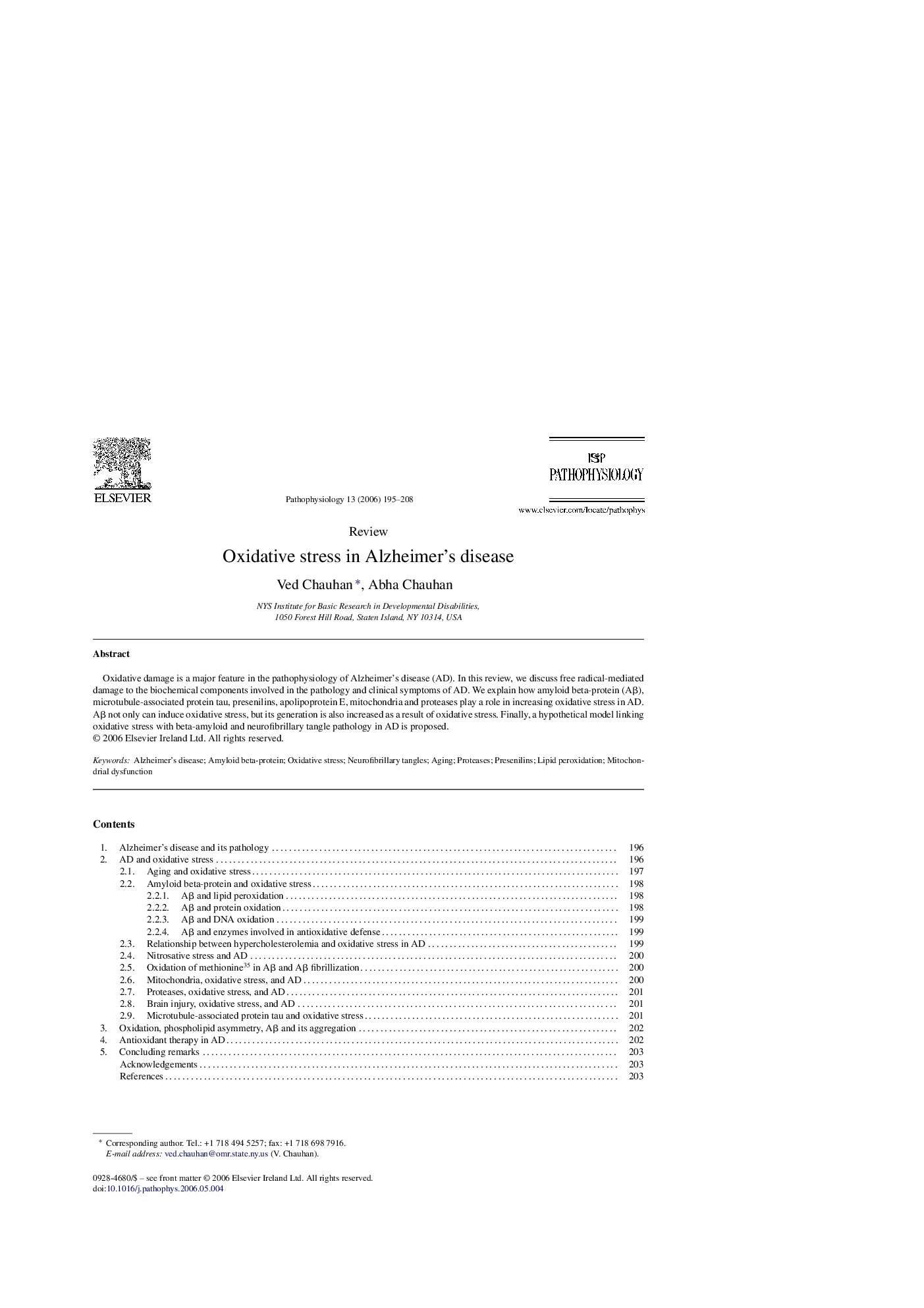| Article ID | Journal | Published Year | Pages | File Type |
|---|---|---|---|---|
| 4137240 | Pathophysiology | 2006 | 14 Pages |
Abstract
Oxidative damage is a major feature in the pathophysiology of Alzheimer's disease (AD). In this review, we discuss free radical-mediated damage to the biochemical components involved in the pathology and clinical symptoms of AD. We explain how amyloid beta-protein (Aβ), microtubule-associated protein tau, presenilins, apolipoprotein E, mitochondria and proteases play a role in increasing oxidative stress in AD. Aβ not only can induce oxidative stress, but its generation is also increased as a result of oxidative stress. Finally, a hypothetical model linking oxidative stress with beta-amyloid and neurofibrillary tangle pathology in AD is proposed.
Keywords
Related Topics
Health Sciences
Medicine and Dentistry
Pathology and Medical Technology
Authors
Ved Chauhan, Abha Chauhan,
